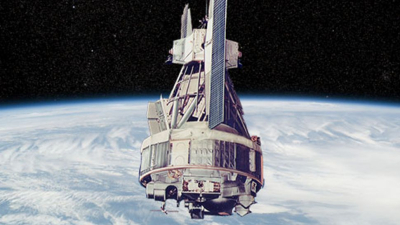SPACE — On April 13, 1969, NASA launched a new weather satellite called Nimbus 3. It was the third in a series of second-generation research and development satellites launched by NASA to test new weather forecasting technologies.
Nimbus 3 has an infrared spectrometer that allows it to record temperatures throughout the Earth’s atmosphere. The instrument can also detect electromagnetic radiation across the entire wavelength spectrum, which helps scientists determine the structure of the atmosphere.
The satellite also has a camera that provides real-time images of cloud coverage. Nimbus 3 was launched on a Thor-Agena rocket from Vandenberg Air Force Station in California and entered polar orbit.
Scroll to read
Scroll to read
Two months later, one of the instruments broke down. After more of its instruments were damaged, NASA stopped the mission in 1972. Source: Space.com
“).attr(
type: ‘text/javascript’,
src: ‘
).prependTo(“head”);
if ($(“.instagram-media”).length > 0)
$(”


